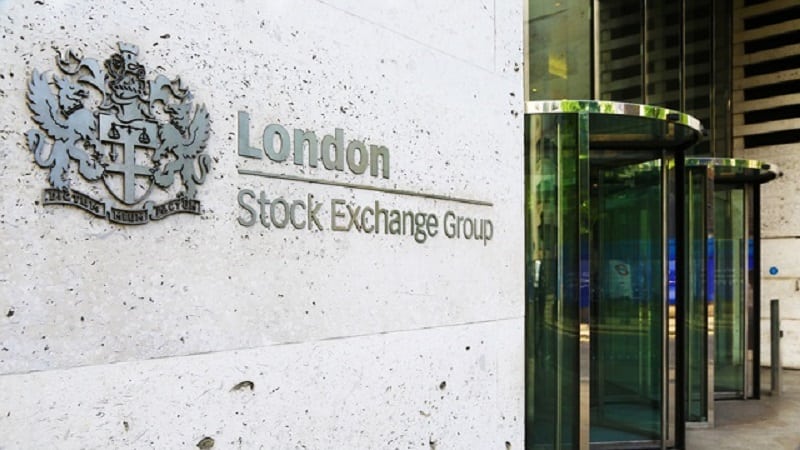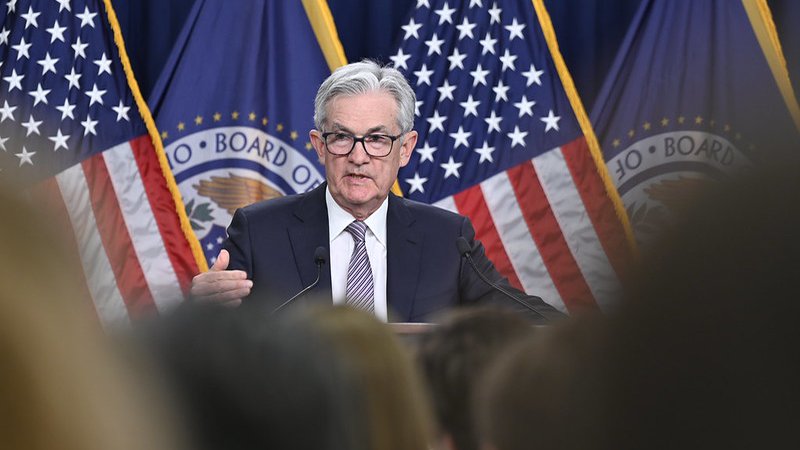The Bank of England (BoE) and Federal Reserve are likely to take different approaches at their respective monetary policy meetings in a bumper week for central bank policy.
The Federal Reserve meets today and tomorrow (6-7 May), ahead of the BoE’s Monetary Policy Committee meeting is on Thursday.
Consensus expectations suggest the Fed will leave interest rates unchanged as the impact of tariffs come into focus, while the BoE is likely to cut.
Federal Reserve
At the Fed meeting, chair Jerome Powell (pictured) is all but certain to express a wait-and-see attitude at this week’s Fed meeting, according to Erik Weisman, chief economist and portfolio manager of MFS Investment Management.
“The chaos of US tariff policy leaves the future macroeconomic landscape especially challenging to discern. With goods prices likely to rise considerably and the labour market likely to soften, the Fed’s dual mandate points only to ambiguity.
“Overlay the tariff confusion with upcoming and uncertain changes in fiscal policy, regulatory policy, immigration policy, and the effects of DOGE, and one could hardly blame the Fed for desperately wanting more time and clarity before it signals any meaningful change in its policy stance.”
See also: ii: Money market fund purchases up 77% in April as investors flock to safety
With last week’s jobs data coming in stronger than expected, Weisman added the Fed will be in no rush to cut.
“The were be no change in rates at this gathering and the market knows this – it’s pricing in just a 6% chance of a rate cut,” added Bob Savage, head of markets macro strategy at BNY.
“The press conference will be the key event of this meeting, and we expect chair Powell to continue to cite uncertainty to justify the Fed’s intention to hold rates until such uncertainty recedes.
“The administration continues – to varying degrees – to call for rate cuts, but we don’t think these will really happen until the July meeting. Our central forecast is for two cuts this year, although if the economy deteriorates significantly in H2 2025, we can’t rule out a third cut.”
Bank of England
The BoE looks likely to cut interest rates, with most economists expecting a 25bps drop to 4.25%.
Jeff Brummette, CIO at Oakglen Wealth, said the most significant event will be the Bank’s future guidance.
“Given the recent national insurance contributions rise, hiring slowdown and rising prices, it is possible policymakers will provide more solid guidance for future easing, provided inflation stays under control – but President Trump’s tariffs continue to cause enormous uncertainty and may keep the bank cautious.
“The front end of the yield curve should continue to perform the best, with a steepening of the curve to be expected.”
PA LIVE: Global equities and Trump volatility: Start of a new cycle?
Despite the consensus, Steve Matthews, investment director, liquidity at Canada Life Asset Management, argues a more significant cut could be on the cards.
“A 50bps rate cut will be firmly on the agenda at the Bank of England’s upcoming meeting, reflecting a shift in the economic backdrop since March’s pause. Global trade disruption and signs of slowdown – highlighted by the recent quarterly fall in U.S. GDP – have brought a larger drop into focus.
“With UK CPI inflation now broadly in line with target, we expect MPC members Dr Swati Dhingra and Dr Catherine Mann to back a 50bps move, opening the door to a potential surprise cut.
“However, based on previous communications from the Bank of England, our expectations align with the market and we anticipate a narrow vote to result in a 25bps cut to 4.25%. Wage growth and services inflation remain sticky, and the Bank is likely to proceed cautiously to protect its inflation-fighting credibility.
“We continue to expect a steady, quarterly pace of rate cuts through 2025 as policymakers balance support for growth with lingering inflationary pressures.”










